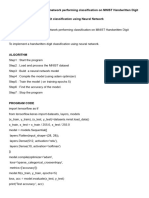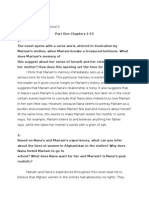0% found this document useful (0 votes)
67 views14 pagesDeep Learning Lab Assignments - 6-9
Uploaded by
Sameer Singh 1135Copyright
© © All Rights Reserved
We take content rights seriously. If you suspect this is your content, claim it here.
Available Formats
Download as DOCX, PDF, TXT or read online on Scribd
0% found this document useful (0 votes)
67 views14 pagesDeep Learning Lab Assignments - 6-9
Uploaded by
Sameer Singh 1135Copyright
© © All Rights Reserved
We take content rights seriously. If you suspect this is your content, claim it here.
Available Formats
Download as DOCX, PDF, TXT or read online on Scribd
/ 14
























































































